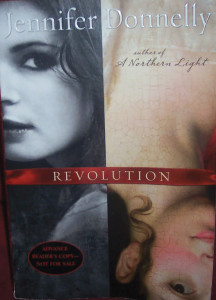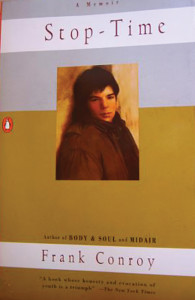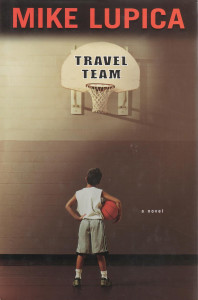As college students, we are no strangers to reading for our selected courses or class room discussions. Therefore, it is easy to drift away from the idea of reading for entertainment. Here are some suggestions the Chronicle staff has put together of their favorite books to read in their free time.
David Sutton, Managing Editor
The memoir “Stop Time” by Frank Conroy is a “stylish” text that uses the elements of fiction to dive deep into the author’s childhood and past experiences. Sutton, states, “I couldn’t put that book down and it reminded me of how beautiful writing can make simple stories so much more fascinating.”
Stephanie Snyder, Editor-in-Chief
“Revolution” by Jennifer Donnelly, is a historical fiction novel that combines past and present to create a unique story line that delivers the message of self-discovery and change.
Snyder says, “I read it (‘Revolution’) twice when I was younger because I liked the plot line so much. It is a story that weaves the lives of a modern-day girl with a girl in the French Revolution. What appealed to me the most is the way the author was able to take a fictional plot and intertwine it with the historical research she had done. It made it interesting, meaningful, and motivated me to do my own digging on the French Revolution.”
Jessica Pacetti, News Editor
If you are looking for a classic, check out “Girl with the Pearl Earring” by Tracy Chevalier. The book tells the life of a young woman who is a servant for a famous painter, Johannes Vermeer. Ultimately, it seems as if her presence might have been inspiration for his famous painting, “Girl with the Pearl Earring.”
Pacetti, says, “I fell in love with this novel because the author creates a story behind who that girl might have been in the painting, captures Vermeer and his family life, and tries to bring to life a tale in 17th century Delft. With Vermeer being one of my favorite artists, I was instantly drawn in.”
Jordan Bolker, Forum Editor
Today, “Grimms’ Fairy Tales” by Jacob Grimm and Wilhelm Grimm, still manages to inspire the creators of many books and movies; think classic Disney characters such as, “Cinderella” or “Sleeping Beauty.” For a variety of reasons, people still cherish these childhood classics.
Bolker says, “Growing up, this book of original fairy tales was probably the first set of stories that I was read to as a child. The morals that you learn from in these stories really help define you as the kind of adult you will be in the future.”
Robert Tomaszewski, Forum Editor
If you prefer science fiction, you might want to look into reading “The House of the Scorpion,” by Nancy Farmer. The novel tells the life of Matteo Alacran, a clone of a wealthy opium dealer, El Patron.
Tomaszewski mentions, “My favorite book is ‘The House of the Scorpion’, by Nancy Farmer. This author has done a very nice job of mixing cultures in futuristic science fiction settings, and this book, taking place in the future on the border between the United States and Mexico, is no exception.”
Jarred DeHerrera, Sports Editor
“Travel Team,” by Mike Lupica is a story about a talented basketball player, Danny Walker and his journey to success. After being cut from a travel team, Danny’s father offers to coach him and other teammates, despite their unlikely chance of winning the championship.
DeHerrera appreciates how relatable the tale is, “I love ‘Travel Team’ because it really brings me back to my childhood and the author does a great job at relating to the reader.”
Corinne Wittig, Arts Editor
Richard Adams’ novel, “Watership Down” follows the story of a community of rabbits who opt to leave their old home after word of destruction. The group of rabbits is led by a blind bunny named Fiver, the same rabbit who knew their old home was no longer safe. Although he has lost his vision, he is able to command the group due to his premonitions about future trials and tribulations.
Wittig says, “This was one of the first novels I completed. I loved the fact the author was able to assign these rabbits with human-like qualities, problems, and values. By doing this, I was able to learn real morals and ideals of society in a fun and eccentric way.”




